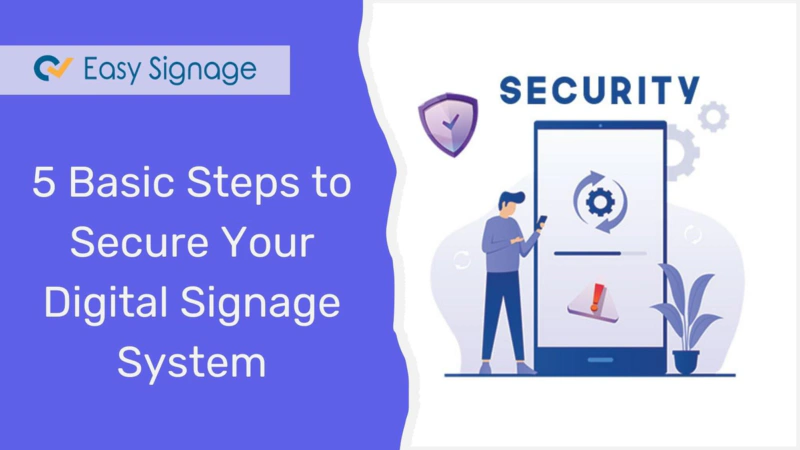5 Basic Steps to Secure Your Digital Signage System

Security is of the utmost importance in the digital signage industry. With hundreds of thousands of viewers at any given moment, any untoward content getting screened can cause significant damage to the organization and the brand. Networked systems are at greater risk of being hacked. When systems are connected through multiple devices to each other through the Internet, the risks are even higher.
The dangers are not just related to inappropriate content being broadcast on the digital displays. A breach in the digital signage system could give hackers entry to other mission-critical systems like the financial information of the company. Therefore, a secure digital signage system should be a priority for not just network administrators but marketers and business leaders.
To ensure signage security, here’s a brief checklist of 5 basic things that systems administrators and business heads should focus on.
1. Don’t Connect to Open Networks
Hackers don’t need physical access to get into a system. Your display screens and players will be vulnerable if you are connected to open or guest networks. Ensure that you only use a secure network that has access to authorized personnel only. An intrusion into the network may not get noticed immediately, so adequate care should be taken to ensure the security of the network.
2. Always Update the Software
This is one of the easiest things to do for the security of your digital signage system. Make sure that the software of your display screens and players are always updated. Not doing this opens backdoors for future problems. Whenever a potential weakness is detected, Digital signage companies releases an update that will rectify the problem immediately.
3. Use Solutions that Use High Security Measures
System managers must make sure that they are not using vulnerable protocols like FTP or HTTP. Always use solutions that use encrypted and protected communications over HTTPS/SSL. Choosing applications that have in-built data encryption is an excellent enhancement for digital signage security.
Choose a system that requires digital signage player software to authenticate to connect to your account with secure methods of approval of every player connected to your players’ network.
4. Don’t Use Homemade Devices
It may be tempting because of short-term cost advantages but using homemade, amateur devices will cause security problems for your digital signage system. Most of the security breaches that you hear about, where hackers access signages and post inappropriate content, is due to the fault in these homemade devices and not due to any inherent weakness in the software or operating system.
5. Ensure Physical Security of the Locations
Digital signages are sensitive because a significant part of the system, i.e., displays, are in the public domain. It’s of the utmost importance to ensure their protection by securely bolting the displays to the wall. There should be adequate security cover for facilities that host servers and media players. This is much more necessary for managed solution providers. Physical access to the facilities should ideally only be given after a biometric scan or PIN entry.
Security Measures at EasySignage
At EasySignage, we take security seriously that’s why we have partnered with the pioneer cloud security providers like Cloudflare and GCP Cloud, and we are protected using the below measures (not limited to)
SSL/HTTPS encrypted comunication
DDoS Protection.
WAF (Web Application Firewall)
Load Balancing
Authorization and Authentication of players
and more
Start Using Digital Signage Today
Sign up today and get (forever free) digital signage, check our website EasySignage.